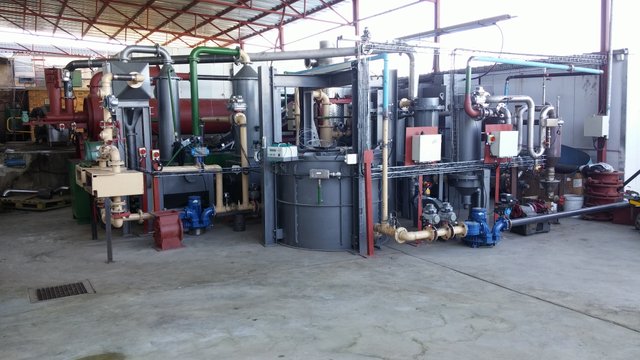First of its kind Waste to Energy plant in the world, right here in Africa
I believe that waste is a valuable commodity that can be extracted with the right technology.
ABATTOIRS handle products most people prefer not to think about as they tuck into their fillet steaks.
The inedible parts of animals can be a health hazard if not properly handled, but are also a useful resource that abattoirs are increasingly learning to turn to their advantage.
If abattoirs don’t have large amounts of uninterrupted power for refrigeration and sterilisation, the consequences are disastrous. As South Africa's power becomes more erratic and expensive, generating its own power makes increasing sense for the industry.
An abattoir in South Africa has taken an alternative route, employing a specialist power company BioWaste Technologies to install a phase pyrolysis plant.

BioWaste Technologies says pyrolysis can be used to turn any waste with a calorific value, including animal, agricultural and plastic waste, as well as coal fines, into syngas. The waste is heated to temperatures of about 900ºC without oxygen, and a thermochemical reaction occurs that creates a hydrocarbon gas or syngas.
The plant is a world first deploying this type of waste to energy technology and is BioWaste Technologies’ first installation in SA.
The abattoir that can slaughter up to 275 head of cattle and sheep and it generates about 11 metric tonnes of contaminated meat and stomach contents per day.
The pyrolysis plant is designed to run 24 hours a day and consume all the calorific waste generated by the abattoir.
The gas is cleaned and then fed to a gas generator to generate up to 120kw per hour of electricity.
The exhaust heat from the plant is used in a heat exchange system to partially heat water needed to clean the abattoir.
There are three advantages to using the abattoir’s waste to generate heat. It saves the company the cost of a 500km round trip three times a week to the nearest legal hazardous waste disposal site.
The plant will also save about one-third of the abattoir’s power demand, and heating the water reduces the amount of paraffin that is required to bring the water to the temperatures the abattoir needs.
About 95% of the energy in the solid waste is turned into usable syngas. The other 5% is used in the process and the residue can be used as a soil conditioner, as it contains large amounts of potassium.
For a relatively small abattoir like this one, carbon emissions are not a big issue, although it would be a factor that bigger companies might consider.
Compared with a coal-fired power station, pyrolysis produces about one-third less carbon emissions and no nitrogen oxide, sulphur dioxide or other harmful emissions and byproducts.
By using its waste on site, the abattoir also cuts vehicle emissions and is not emitting the methane that would be released if the waste was sent to a landfill.
BioWaste Technologies decided to market pyrolysis as a technology solution rather than a biogas solution because anaerobic digestion of biomass is a relatively lengthy process, less efficient in converting waste to energy, and could be difficult to manage as bacteria die if temperature and nutrition are not held within strict limits. Pyrolysis is a predictable and reliable science and a fully scaleable technology.
They are looking at other waste-to-energy opportunities using various fuel sources that could generate between 1 and 600MW per project.
Sources
BioWaste Technologies Archives
Business Day13 Oct 2015CHARLOTTE MATHEWS [email protected]